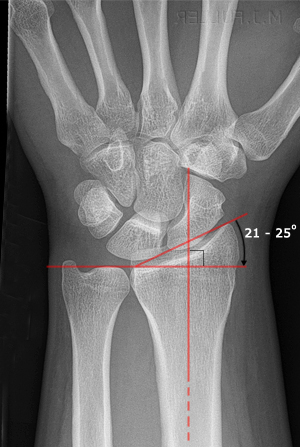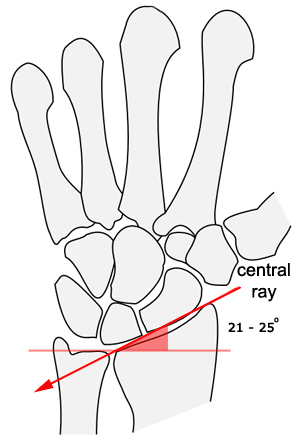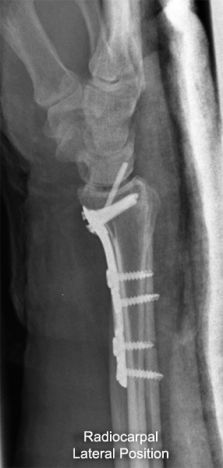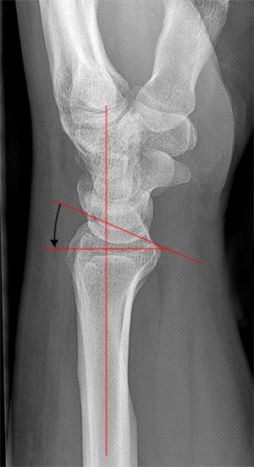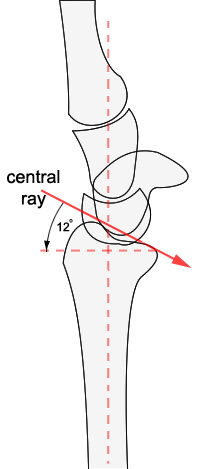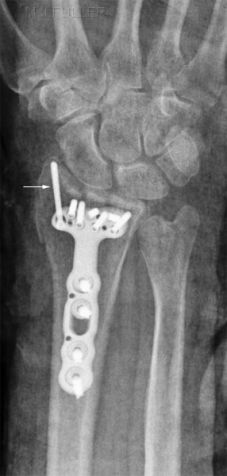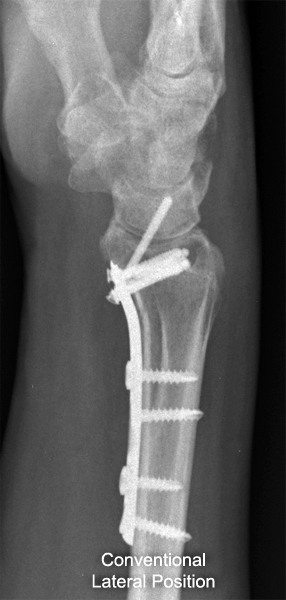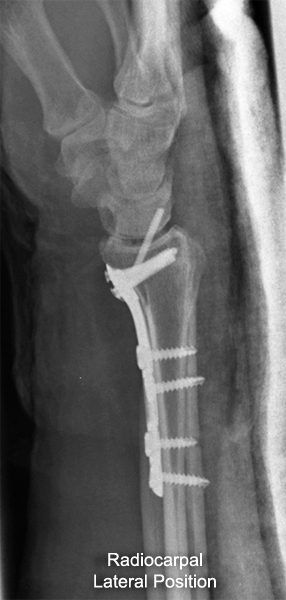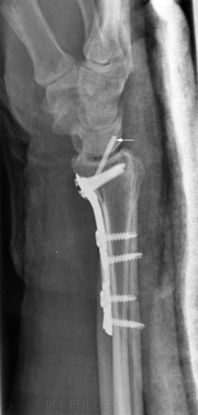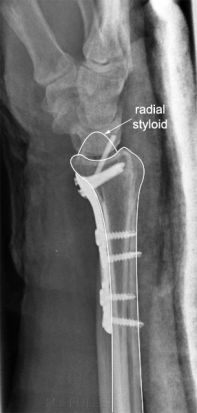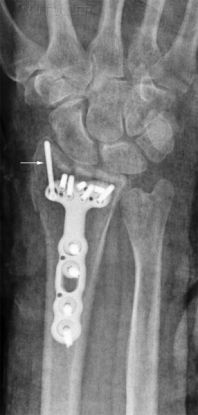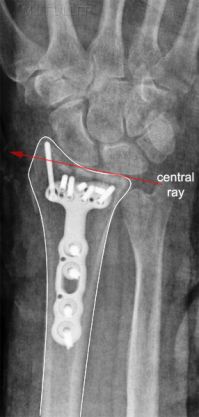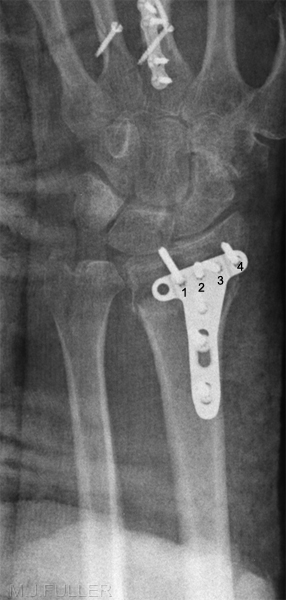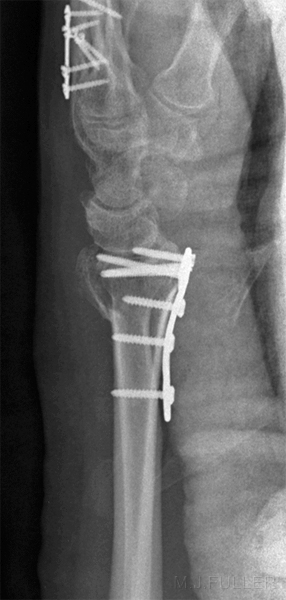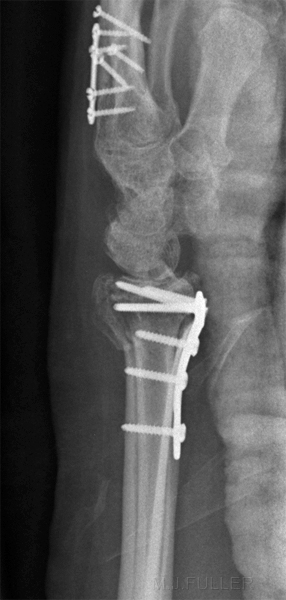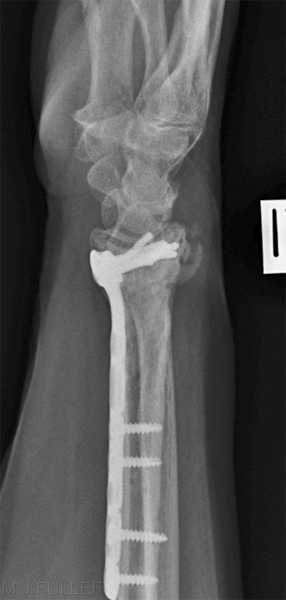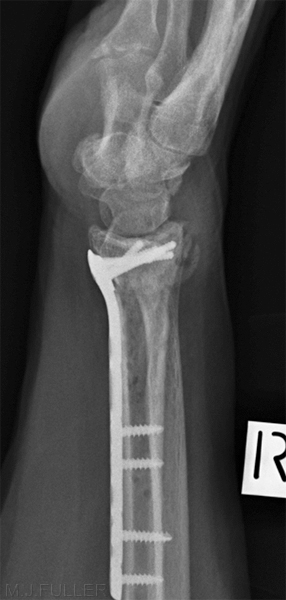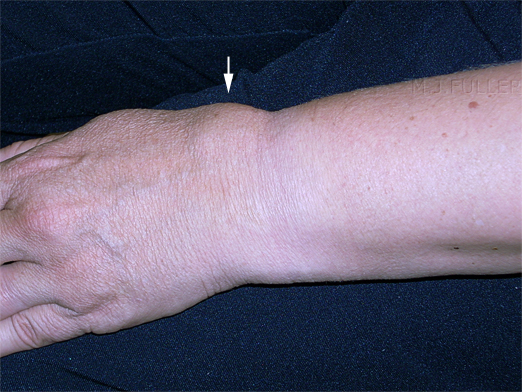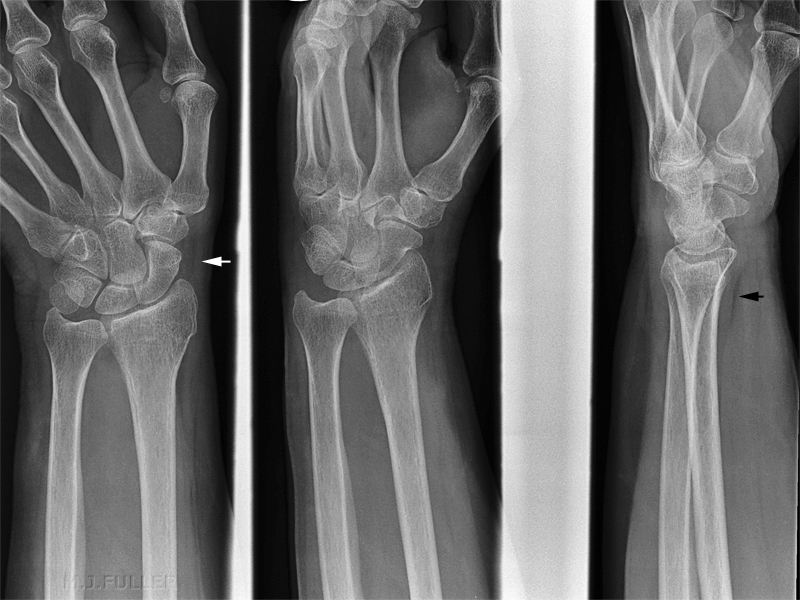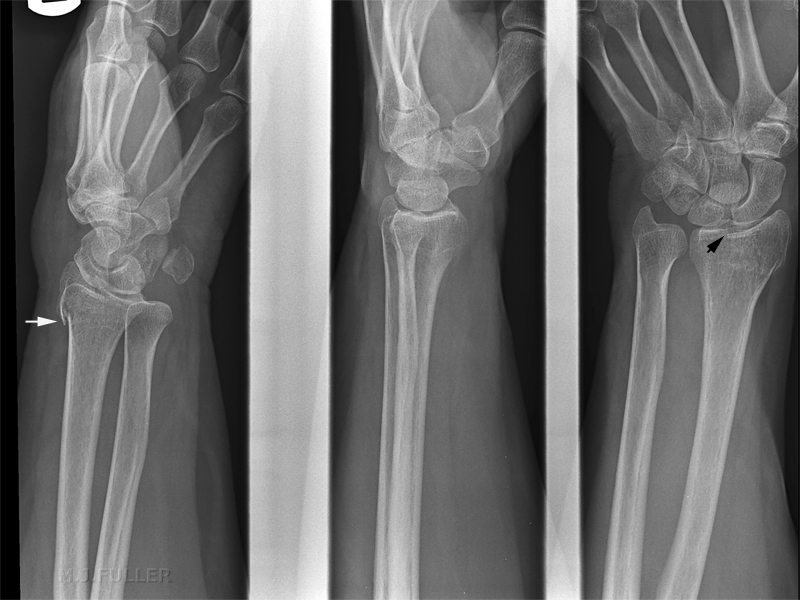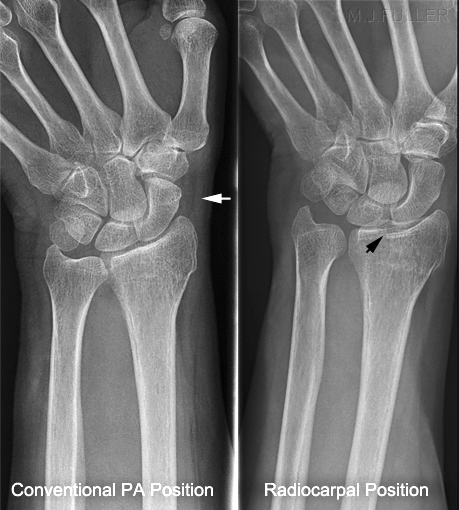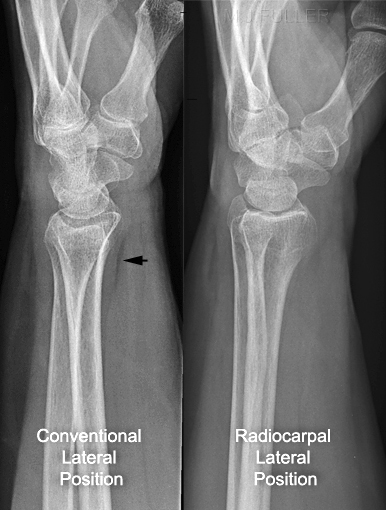Is the Screw in the Joint?
When an orthopaedic surgeon applies plates and screws to a wrist fracture, it is important that the screws do not penetrate into the wrist joint. Standard radiographic views of the wrist often project the tips of the screws into the wrist joint. This page considers radiographic techniques that will demonstrate the true position of these screws in relation to the wrist joint.
Radiography
When standard PA and lateral views of the wrist are performed, the radiocarpal joint is not imaged in profile
The Radial Styloid Screw Trap
Case1
Comment
On the basis of the conventional views of the wrist, screw 1 appears to be within the radiocarpal joint. The modified radiocarpal lateral view image suggests that screw 1 is less of a threat to the radial articular cartilage than would be suggested by the conventional wrist positioning radiography.
Case 2
Case 3
This series demonstrated no obvious fracture... although the distal radius is suspect looking. The scaphoid fat pad (white arrow) and the pronator fat pad (black arrow) were normal.
The radiographer was convinced clinically that the patient had sustained a fracture and considered whether the soft tissue signs were misleading (as there are known to be on occasions). Supplementary views were performed as shown below.
Comment
Orthopaedic surgeons often perform radiocarpal views of the wrist following ORIF as the final image intensifier images. This raises the question of whether we should be routinely performing the same modified wrist views when these patients are referred for follow-up imaging. The joint of interest in these cases is the radiocarpal joint- the articulation between the lunate/scaphoid and the distal radius articular surface- should we not be imaging specifically for this joint?
The radiocarpal views (both PA and lateral) have been found to be valuable supplementary views in patients with subtle distal radius fractures.
... back to the Wikiradiography home page
... back to the Applied Radiography page
